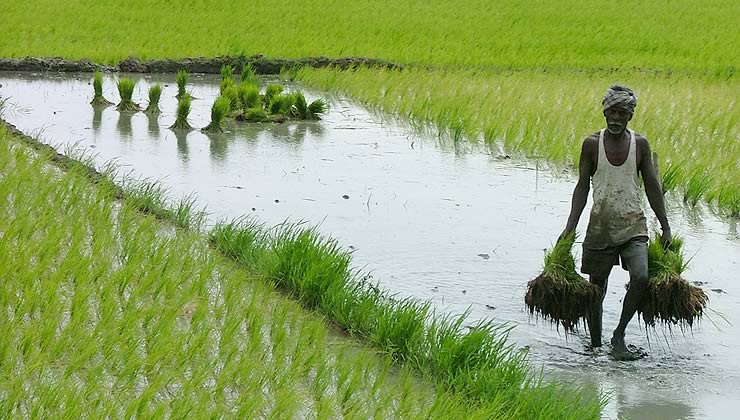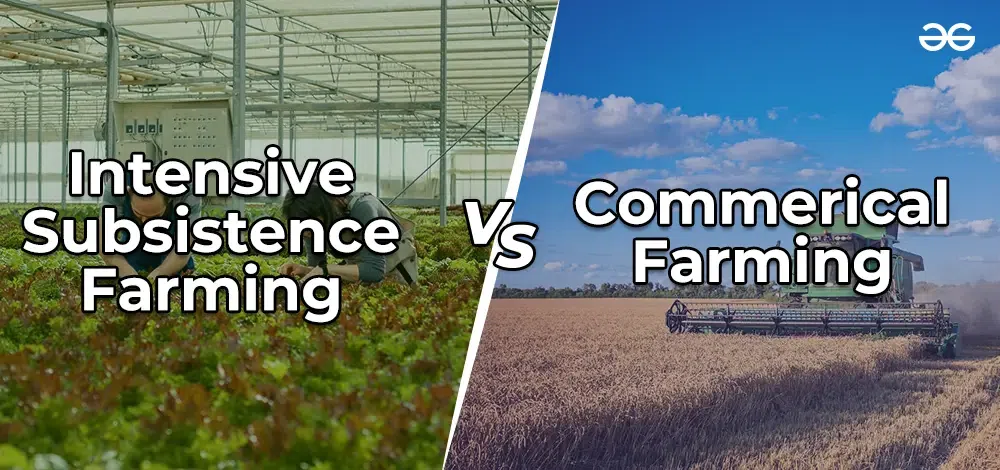Neighborhood Strength and Its Connection to Commercial Farming vs Subsistence Farming
Neighborhood Strength and Its Connection to Commercial Farming vs Subsistence Farming
Blog Article
Exploring the Differences Between Commercial Farming and Subsistence Farming Practices
The duality between business and subsistence farming methods is marked by varying objectives, functional scales, and source use, each with profound effects for both the setting and culture. On the other hand, subsistence farming emphasizes self-sufficiency, leveraging standard methods to maintain family requirements while nurturing neighborhood bonds and cultural heritage.
Economic Purposes
Economic purposes in farming techniques typically determine the methods and scale of procedures. In business farming, the primary economic goal is to maximize revenue.
On the other hand, subsistence farming is primarily oriented in the direction of fulfilling the prompt demands of the farmer's family, with surplus manufacturing being marginal. The financial objective here is commonly not profit maximization, however rather self-sufficiency and threat minimization. These farmers typically operate with minimal resources and depend on conventional farming techniques, tailored to neighborhood ecological problems. The main goal is to ensure food security for the household, with any kind of excess fruit and vegetables offered locally to cover basic necessities. While business farming is profit-driven, subsistence farming is focused around sustainability and durability, reflecting a fundamentally various collection of economic imperatives.

Range of Procedures
The difference in between commercial and subsistence farming ends up being especially noticeable when considering the scale of operations. The scale of industrial farming enables for economic situations of scale, resulting in decreased expenses per system with mass manufacturing, boosted performance, and the capacity to spend in technological advancements.
In plain contrast, subsistence farming is generally small, focusing on producing simply sufficient food to meet the prompt requirements of the farmer's family or local area. The land area involved in subsistence farming is usually minimal, with less accessibility to contemporary technology or automation.
Resource Utilization
Source application in farming practices discloses considerable differences in between industrial and subsistence approaches. Industrial farming, defined by large operations, frequently uses sophisticated technologies and automation to optimize making use of resources such as land, water, and fertilizers. These techniques allow for boosted effectiveness and greater efficiency. The focus gets on making best use of outcomes by leveraging economic situations of scale and releasing resources tactically to ensure constant supply and profitability. Precision farming is increasingly embraced in business farming, using information analytics and satellite technology to keep track of plant health and enhance resource application, further enhancing return and resource effectiveness.
On the other hand, subsistence farming operates a much smaller range, largely to fulfill the prompt needs of the farmer's household. commercial farming vs subsistence farming. Source use in subsistence farming is usually restricted by economic restraints and a dependence on traditional techniques. Farmers generally use manual work and natural deposits available locally, such as rain and natural garden compost, to grow their plants. The focus is on sustainability and self-direction as opposed to making the most of outcome. Subsistence farmers might deal with challenges in source monitoring, including limited accessibility to enhanced seeds, plant foods, and watering, which can limit their capability to enhance performance and earnings.
Ecological Effect

Alternatively, subsistence farming, exercised on a smaller scale, generally utilizes standard strategies that are extra in harmony with the surrounding environment. Crop rotation, intercropping, and natural fertilization are typical, advertising dirt health and wellness and minimizing the demand for artificial inputs. While subsistence farming commonly has a reduced ecological impact, it is not without obstacles. Over-cultivation and inadequate land administration you can try this out can cause dirt disintegration and deforestation in some situations.
Social and Cultural Ramifications
Farming methods are deeply intertwined with the social and social material of neighborhoods, influencing and mirroring their worths, customs, and economic frameworks. In subsistence farming, the focus gets on growing sufficient food to satisfy the immediate demands of the farmer's household, typically fostering a solid feeling of community and shared duty. Such techniques are deeply rooted in regional traditions, with expertise passed down via generations, therefore protecting cultural heritage and strengthening communal connections.
On the other hand, commercial farming is largely driven by market demands and profitability, often causing a shift in the direction of monocultures and massive procedures. This method can lead to the disintegration of traditional farming techniques and cultural identifications, as local personalizeds and knowledge are replaced by standard, industrial approaches. Additionally, the concentrate hop over to here on effectiveness and earnings can in some cases lessen the social cohesion discovered in subsistence communities, as financial purchases replace community-based exchanges.
The duality in between these farming practices highlights the wider social effects of agricultural options. While subsistence farming sustains social continuity and neighborhood connection, business farming aligns with globalization and economic development, typically at the price of traditional social structures and multiculturalism. commercial farming vs subsistence farming. Stabilizing these facets stays a crucial difficulty for lasting farming growth
Verdict
The examination of business and subsistence farming methods exposes significant distinctions in goals, scale, source use, environmental influence, and social ramifications. On the other hand, subsistence farming emphasizes self-sufficiency, making use of regional sources and standard methods, therefore advertising cultural conservation and community communication.
The dichotomy in between industrial and subsistence farming practices is noted by differing purposes, operational ranges, and resource application, each with profound effects for both the environment and culture. While commercial farming is profit-driven, subsistence farming is focused around sustainability and resilience, mirroring a fundamentally various set of financial imperatives.
The distinction in between business and subsistence farming comes to be especially obvious when taking into consideration the range of operations. While subsistence farming sustains cultural connection and community interdependence, business farming aligns with globalization and financial resource development, commonly at the cost of standard social frameworks and social diversity.The assessment of business and subsistence farming practices exposes substantial differences in goals, range, source use, ecological influence, and social implications.
Report this page